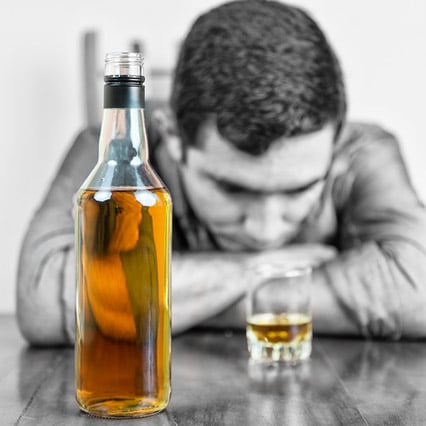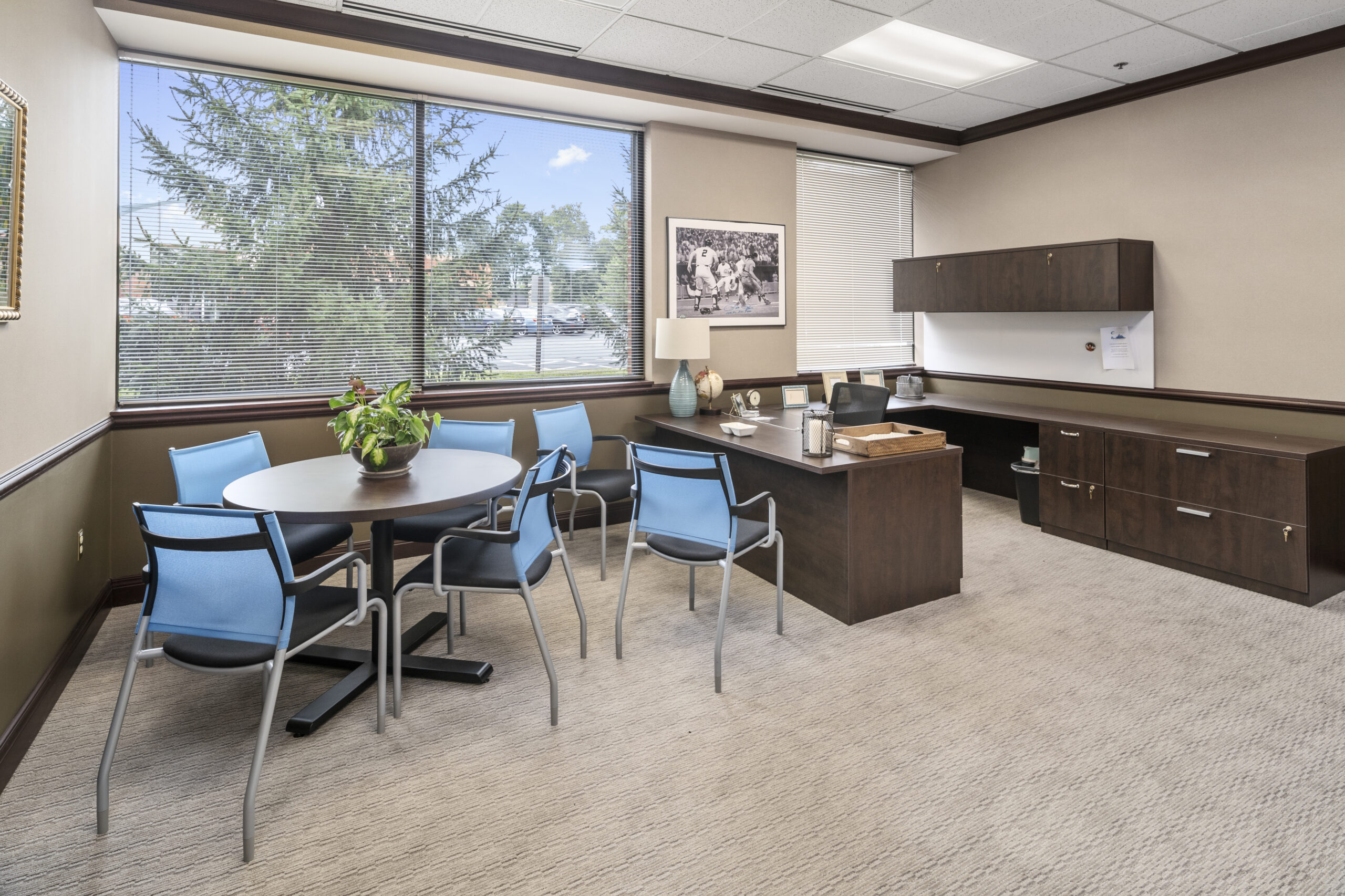
Drug Addiction Treatment in Ohio
- According to our Cincinnati Drug Rehab, what is Substance Use Disorder?
- What are the contributing causes to the development of a Substance Use Disorder?
- How we recognize signs of Substance Use Disorder at our Drug Rehab Facilities in Ohio
- Commonly used substances we treat at our Cincinnati Drug Rehab
- Drug Addiction Treatment in Ohio at Hotel California by the Sea
- Thirteen Principles of Effective Drug Addiction Treatment
- Insurance Coverage in Ohio
- Get Help at our Cincinnati Drug Rehab
- Request a Call
Substance abuse is the misuse of mind-altering drugs, which include prescription drugs, illicit drugs and alcohol. At Hotel California by the Sea, our drug addiction treatment in Ohio is one of the most sought after addiction treatment programs in the country. Our program serves all those in need of substance abuse treatment.
We offer unparalleled solutions to drug abuse. Our programs offer various levels of care, targeted treatment plans, and a thriving community of recovering peers. Our drug rehab facilities in Ohio offer a full continuum of care.
Our drug addiction treatment in Ohio enables us to work with patients over the 90-day standard of time. Our programs continue to support them through every step of their recovery journey.
OR:
Request a Call

Substance use disorders can result in a range of destructive behaviors. Some include financial problems, violence, trauma, troubled relationships and feelings of depression and anxiety. Recovering alone isn’t easy.
Our Cincinnati drug rehab gives patients the support of experienced rehab professionals and access to a community of recovering peers. These elements play a huge factor in encouraging lasting sobriety. We are determined to change the lives of individuals stuck in the cycle of addiction.
According to our Cincinnati Drug Rehab, what is Substance Use Disorder?
A substance use disorder (SUD) is a disease that can affect a person’s brain leading to the inability to control the use of mind-altering substances such as drugs or alcohol. SUD can affect a person’s physical and psychological state of being and lead to addiction and dependency to the drug being used. For those suffering from SUD, specialized treatment at a substance abuse rehab program can help stop compulsive drug using behaviors.
In many cases, SUD can lead to the development of distorted thoughts and behaviors. This is due to the physical alterations in the brain structure caused from excessive use of mind-altering drugs. These changes can cause intense cravings, changes in personality and behavior, and even distort normal cognitive decision-making skills. The longer the usage of these substances, the more damaging these changes are to the brain and its ability to function properly.
At Hotel California by the Sea in our drug addiction treatment in Ohio, substance use disorder treatment begins with inpatient programming. Treatments can include a medically managed drug detox and residential treatment services. Outpatient programs such as PHP and IOP allow patients to focus on any co-occurring mental health conditions related to their drug addiction.
We believe in long-term substance abuse treatment. This will allow individuals the time and space they need to work with rehab professionals. Clinicians will get a better understanding of their issues and strengthen their motivations to recover.
What are the contributing causes to the development of a Substance Use Disorder?
Substance use disorders and drug addictions can be caused by a multitude of factors. These factors include genetic bias, co-occurring mental health disorders and even social and environmental influences. Among young adults, peer pressure plays a significant impact on participating in substance use such as alcohol binge drinking.
In some cases, individuals can use substances as a form of self-medication. These mind-altering substances are used to help them manage any distressing emotions or traumatic experiences. Ultimately, there are a number of leading causes that can contribute to the development of a substance use disorder. Each individual is different in their needs when it comes to finding the best possible treatment.

How we recognize signs of Substance Use Disorder at our Drug Rehab Facilities in Ohio
Substance use disorders physically alter brain functions affecting cognitive abilities such as decision-making and coping skills. These basic brain functions become impaired and can lead to questionable judgments and behaviors.
Other more subtle signs to look for in a person include changes in eating or sleeping habits. Carelessness with personal grooming and a disheveled appearance are also clues. And a decline in relationships with friends and family could be sign of a developing addiction
Some of the most common cues of a substance use disorder include:
- Withdrawal from normal social and recreational activities
- Continued use of drugs despite harmful physical and psychological consequences
- Experiencing withdrawal symptoms if drug use has decreased
- The development of a high tolerance or an increasing need to use drugs to achieve the desired effects
Commonly used substances we treat at our Cincinnati Drug Rehab
According to the Ohio Substance Abuse Monitoring Network (OSAM), opioids and psychostimulants remain the most abused and highly available drugs in the Cincinnati region of Ohio. Popular opioids such as fentanyl, heroin and Suboxone can all be treated with the help of our drug addiction treatment in Ohio. Common psychostimulants include meth and cocaine.
In some cases, these drugs are used to assist with opioid withdrawal. Unfortunately, this just leads to a continuous cycle of using drugs. People use drugs to help alleviate the pain of other drugs. It ultimately leads to the continuation of using more harmful mind altering drugs.
Opiates and narcotics
Opioids are substances either derived from the opium poppy or synthetically derived in a laboratory. They are a class of substances known as painkillers. Opioids are one of the most highly addictive substances due to its immediate increase in tolerance, cravings and lack of control. These drugs are usually prescription medications that have been prescribed by medical physicians to treat chronic and unmanageable pain.
According to the National Institute on Drug Abuse, overdose deaths involving prescription opioids were five times higher in 2016 than in 1999. This number continues to grow today despite the FDA and the pharmaceutical industry’s efforts to regulate and control distribution and usage.
Opiates mimic the pleasure sensation of endorphins in the brain. With constant long term usage, it will no longer give the user the same initial sensation. This leads to using more and in higher dosages in order to get the desired effects. Some of the most common opioids include codeine, oxycodone, fentanyl and heroin.
Stimulants
Stimulants or psychostimulants are substances that drastically increase activity in the body. Also known as “uppers,” stimulants speed up both physical and mental activity in a person’s body. This causes intense high energy and increased dopamine in the brain.
Some of the most commonly used stimulants include cocaine, meth, Adderall and Kratom. Long-term usage of stimulants can alter brain functions that ultimately lead to significant mood and behavior changes in the person using the drug.
Depressants
Central nervous system depressants are also known as sedative drugs. These types of substances slow down brain activity and are usually taken to feel calm and relaxed. For those who experience anxiety, panic disorders and sleep disorders, these types of drugs are commonly prescribed to help manage and calm their distressing feelings. Alcohol is the most recognized depressant substance that is most commonly abused and can affect people of all ages and backgrounds. Because of its availability and accessibility, it can become very addictive. Other types of depressants include Xanax, Klonopin, Ativan and Valium.
Psychoactive Drugs
Psychoactive drugs are also known as mind-altering substances. One of the most common drugs abused in this classification of drugs is marijuana. The main chemical component in marijuana that produces a euphoric sensation in the brain and body is called delta-tetrahydrocannabinol (THC). Like all substances, when taken in excess, some individuals can begin experiencing negative symptoms such as paranoia, fear and panic.
Drug Addiction Treatment in Ohio at Hotel California by the Sea
At our Cincinnati drug rehab, we offer individualized treatment programming for substance abuse. We offer a comprehensive treatment approach through various levels of care. Programs range from medically managed drug detox, residential services and outpatient treatments. There is no one-size-fits-all approach to addiction treatment. Each of our patients will receive a customized, comprehensive treatment plan that will best help them recover from their addiction.
Upon entrance into our drug addiction treatment in Ohio, patients will receive assistance and support through their initial drug detox. They may receive medication-assisted treatment (MAT) or other forms of withdrawal management to aid in the discomfort of detoxing.
Patients will then move onto residential programming where they will be given daily assessments. This monitors their progress to make any adjustments to their care plan as necessary. In this phase patients will begin therapeutic treatments to address the root causes of their addiction. Treatments also tackle any co-occurring mental health disorders that may be present.
Individual and group therapies include: CBT, DBT and EMDR therapy. As patients move down in intensity of care, outpatient programming offers continued support. Therapeutic treatments along with offering additional services help patients prepare to enter independent life outside of rehab. These services include: career and educational planning assistance, sober transitional housing assistance and family therapy and support services.
The state of Ohio has made great strides in promoting substance abuse awareness. It is also recognizing it as a mental health issue. Our inpatient drug rehab centers in Ohio and outpatient drug rehab programs provide exceptional resources.
We serve clients in Ohio and neighboring regions who are seeking drug addiction treatment. Individuals cannot recover alone. We are here to guide you through every step of the process. Everyone deserves a life free from the dependency on drugs.

Thirteen Principles of Effective Drug Addiction Treatment
The Thirteen Principles of Effective Drug Addiction Treatment, as defined by the National Institute of Drug Abuse are as follows:
1. Addiction is a complex but treatable disease that affects brain function and behavior.
Engaging in extreme and overconsumption of substances can physically alter the brain’s structure, disrupting its normal brain functions. This ultimately results in erratic and questionable mood and behaviors.
2. No single treatment is appropriate for everyone.
There is no one-size-fits-all approach to substance use disorder treatment. Every patient presents unique concerns when it comes to their addiction. In order to best treat them, individualized care and evidenced proven treatments and interventions are key to a successful recovery.
3. Treatment needs to be readily available.
At our drug addiction treatment in Ohio, we are here to help you decide the best options for your treatment. We will verify your insurance policy, review your treatment options and assist in understanding any financial responsibilities. We are ready to help you through every step of this process in order to get you the help you need.
4. Effective treatment attends to multiple needs of the individual, not just his or her drug abuse.
Drug addiction treatment should include a holistic approach of medical treatments. It should include therapies for co-occurring mental health disorders and other psychiatric disorders.
5. Remaining in treatment for an adequate period of time is crucial.
The timeline and duration for addiction recovery treatment depend on the individual needs of each patient. Our rehab program will work with each of our patients and create a comprehensive care plan tailored to their own individual progress throughout the program. The average treatment time is about 90 days.
6. Behavioral therapies – including individual, family or group counseling – are the most commonly used forms of drug abuse treatment.
We offer specialized behavioral therapies such as CBT, DBT and EMDR. These treatments help uncover the underlying causes of a patient’s addiction. Patients learn and practice various coping skills to implement into their newly drug free lives.
7. Medications are an important element of treatment for many patients, especially when combined with counseling and other behavioral therapies.
Carefully managed medications are often used as a form of treatment for some patients experiencing distressing withdrawal symptoms during detox. Medication-assisted treatment (MAT) can help ease the pain of withdrawal symptoms and well as control any drug cravings and relapses. Medications used are generally categorized into two groups: taper medications and comfort medications.
8. An individual’s treatment and services plan must be assessed continually and modified as necessary to ensure that it meets his or her changing needs.
At our Cincinnati drug rehab, our patients receive regular individual assessments to address their needs and progress throughout their rehab stay. Some patients may need a combination of treatments. This may include various individual and group therapies, medication services and even social or legal services. We believe a customized treatment plan is the key to a successful recovery.
9. Many drug-addicted individuals also have other mental disorders.
A dual diagnosis is very common in those who are suffering from substance abuse disorders. These co-occurring mental health conditions should also be treated alongside the drug addiction. Treatment methods appropriate medications or various behavioral therapies.
10. Medically assisted detoxification is only the first stage of addiction treatment and by itself does little to change long-term drug abuse.
Medically managed detoxification is only the first step in rehab and long-lasting sobriety. In addition, individual and group behavioral therapies will greatly increase the probability of long-term sobriety.
11. Treatment does not need to be voluntary to be effective.
Many of our patients reach out to our rehab program on their own accord. They are in need of substance abuse treatment and voluntarily welcome professional help. Professional addiction treatment can be a necessary path for individuals whose family has become concerned for their well-being. These people are usually in denial and in need of support for long term recovery.
12. Drug use during treatment must be monitored continuously, as lapses during treatment do occur.
In our drug detox and inpatient drug rehab centers in Ohio, patients are closely monitored. They are given daily assessments where adjustments to medications and treatment plans are made according to patient progress.
13. Treatment programs offer testing for infectious diseases if appropriate as well as provide targeted risk-reduction counseling, linking patients to treatment if necessary.
Our drug addiction treatment in Ohio not only addresses drug-related issues, but issues related to other infectious diseases. Drug related activity and behavior can often lead to risk of infectious diseases. Because of this, our facilities offer testing and treatment for diseases to all patients if necessary.
Insurance Coverage in Ohio
We accept two types of insurance coverage. Navigating insurance can be confusing. Our team is here to help you verify your benefits quickly and easily.
In-Network Provider
We are a participating, in-network provider for the following insurance plans in Ohio:
- Anthem Blue Cross and Blue Shield of Ohio
- Most Out-of-State Blue Cross Blue Shield (and Anthem) Plans
- Custom Design Benefits
- GEHA
- Carelon (formerly Beacon Health Options or Value Options)
Out-of-Network Provider
We are an out-of-network provider for the following insurers. This means we can accept your insurance if your specific plan includes out-of-network benefits for substance use disorder (SUD) treatment. We can typically work with PPO plans that offer out-of-network coverage.
Common insurers we work with on an out-of-network basis include:
- United Healthcare (UHC) / Optum / UBH / UMR / All Savers / Surest
- Aetna / Meritain
- Cigna / Evernorth Behavioral Health
- Allied Benefit Systems
- Medical Mutual of Ohio
- Humana
Unsure About Your Coverage?
If your insurance company is not listed, or if you are not sure about your benefits, please reach out. We can easily verify your coverage for you at no cost. Just call us at (513) 654-6655 or fill out our online verification form below.
Get Help at our Cincinnati Drug Rehab
Substance abuse is a chronic disorder that can affect anyone. At Hotel California by the Sea’s drug addiction treatment in Ohio understands what it takes to overcome addiction. We provide the tools and resources for patients to rediscover life. Our Cincinnati drug rehab offers inpatient and outpatient programs. These provide various treatment options to fit the needs of each client.
Call the admissions team at our drug rehab centers in Ohio to learn more about our substance abuse treatment therapies. Along with our specialized services, patients will receive the tools and resources they need to transition into independent life.
Request a Call
The road to recovery is full of uncertainty, leave your worries behind…
Our compassionate staff will answer all of your questions without any pressure. Learn about our evidence-based drug addiction treatment and rehab, the ease of entering our program, and the benefits of getting help from a reputable addiction treatment facility like Hotel California by the Sea.
Every member of our admissions team has been where you are today – be sure to ask them about their journey!






